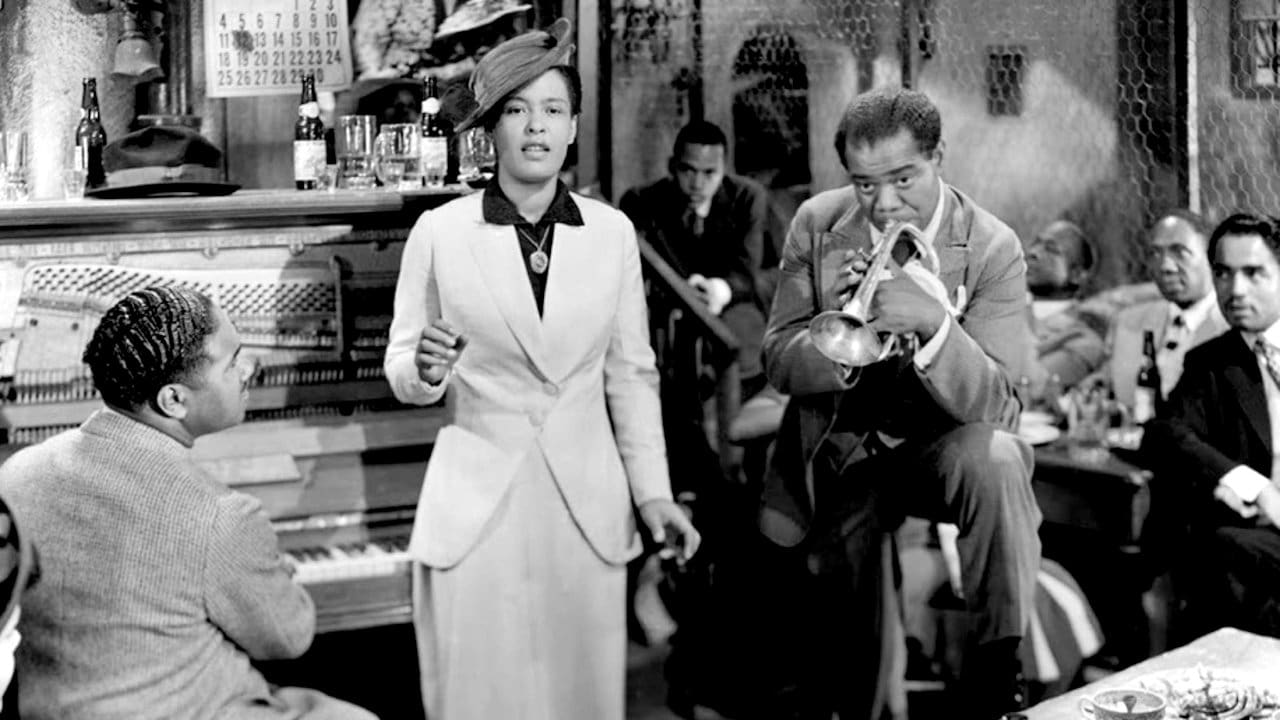

The greatest movie ever!
... View MoreGood , But It Is Overrated By Some
... View MoreAn unexpected masterpiece
... View MoreIt is not deep, but it is fun to watch. It does have a bit more of an edge to it than other similar films.
... View More"New Orleans" started out as an Orson Welles project at RKO -- a Louis Armstrong biopic with Armstrong playing himself -- and it morphed through several different incarnations (including a version by writer Valentine Davies that ultimately got filmed as "Syncopation" in 1942) before ending up with producer Jules Levey as the film we have. There's certainly a sense of might-have-been about this movie that was only accentuated in the early 1980's when an independent jazz reissue label called Legends released the surviving pre-recordings made by Louis Armstrong and Billie Holiday in October 1946 for use in the film -- including a treasure trove of music that hadn't made it anywhere near the final cut -- and the idea of basing a film about the history of jazz around a set of boring white characters and reducing the African-Americans to extras in their own story is all too familiar in Hollywood's treatment of just about any story involving African-based politics or culture.Now for the good news: within the horrible limits of the concept, the script is relatively well constructed, and Arthur Lubin's direction shows some visual imagination -- notably in the opening tracking shot through the streets of back-lot "New Orleans" before the camera enters Arturo de Cordova's cabaret/casino and discovers Louis Armstrong and his band playing "West End Blues" (inexplicably renamed "Name-Your-Poison Blues" in the film). In her autobiography "Lady Sings the Blues" Billie Holiday vividly registered her disgust at being cast as a maid, and in the scenes with Dorothy Patrick she's visibly stiff, barely able to get the servile dialogue out of her mouth -- but when she shows up at the cabaret set and gets to sing with Armstrong's band she visibly loosens up and becomes a relaxed and quite effective screen presence. My partner noted the similarities between "New Orleans" and the 1936 MGM film "San Francisco" -- both are about gamblers who own night clubs and opera singers who climb down from their pedestals to perform popular music, and the (real) closure of New Orleans' Storyville red-light district in 1917 fulfills the same climactic story function as the 1906 earthquake and fire did in "San Francisco."The first time I saw any part of "New Orleans" was at a screening of jazz movies in 1970, at which the host presented three numbers from the film ("Do You Know What It Means to Miss New Orleans?," "Where the Blues Were Born in New Orleans" and "Farewell to Storyville") that had been blown up from 8 mm sound prints released for home sales in France. The host said that the rest of the film had been lost, so it was quite surprising to me when I got to see the complete version twice in 1973 on an independent local TV station in the San Francisco Bay Area. Then I didn't see the film again until Kino released it on DVD, and having got over my disappointment at what it could have been, this time I could appreciate it for what it is: a flawed movie with an almost unbearably pretentious ending but still a quite entertaining film as well as a chance to see Armstrong and Holiday at the peak of their powers. (Woody Herman is hardly showcased to good effect even though he was leading perhaps the best band of his career, the "First Herd," at the time.) And I'm surprised the other commentator mentioning the greatest jazz movies left out my all-time favorite, Clint Eastwood's "Bird."
... View MoreLouis Armstrong and his band (African American), along with Billie Holiday (African American and she plays a maid who just happens to also be a singer!) originate "jass" (later in the plot renamed jazz) in this film. The (white) club owner sponsors them--until he becomes a music manager and lo and behold--his big jazz act becomes Woody Herman and his band (all white). By the end, Billie Holiday, Satchmo, and the rest are replaced as crusaders for this new music by the blonde heroine of the movie (white), a full symphony orchestra (all white), and the Woody Herman band as symbols of the acceptance of jazz into proper American music circles. The movie ends with the latter crew triumphantly and oh-so-blandly performing a song they learned from Satch and the gang, although we never do find out what happened to them! That said, the movie is an important jazz history artifact--Satchmo and Lady Day and their fellow musicians are incredible.
... View MoreThis is a corny movie lets get that straight right off the bat. It is redeemed when Billie opens her mouth. If you never heard Billie Talk then this is the movie for you. She looks as if shes bored to death but what a job she does on, "Do you know what it means to miss New Orleans, The Blues Are Brewing and my favorite, Goodbye to storyville" Pops is pops and hes good as gold. But how this movie drags on! You will find yourself waiting for the scenes with Billie or Louis or the other jazz folk. The actress, Dorthy Patrick, I swear she never made another movie after this. At least i hope so! If you get this on DVD you luck up you get Billie and dukes symphony in black 1935 and a short with Louis. I guess that makes up for the awful film!
... View MoreJust the musicians alone make this a worthwhile movie...jazz musicians like Louis Armstrong, Billie Holiday, Kid Ory, Barney Bigard, Meade 'Lux' Lewis, Woody Herman, Zutty Singleton, and others have close-ups, and a number of them have speaking parts. There are nine musical numbers featured in the movie also.
... View More